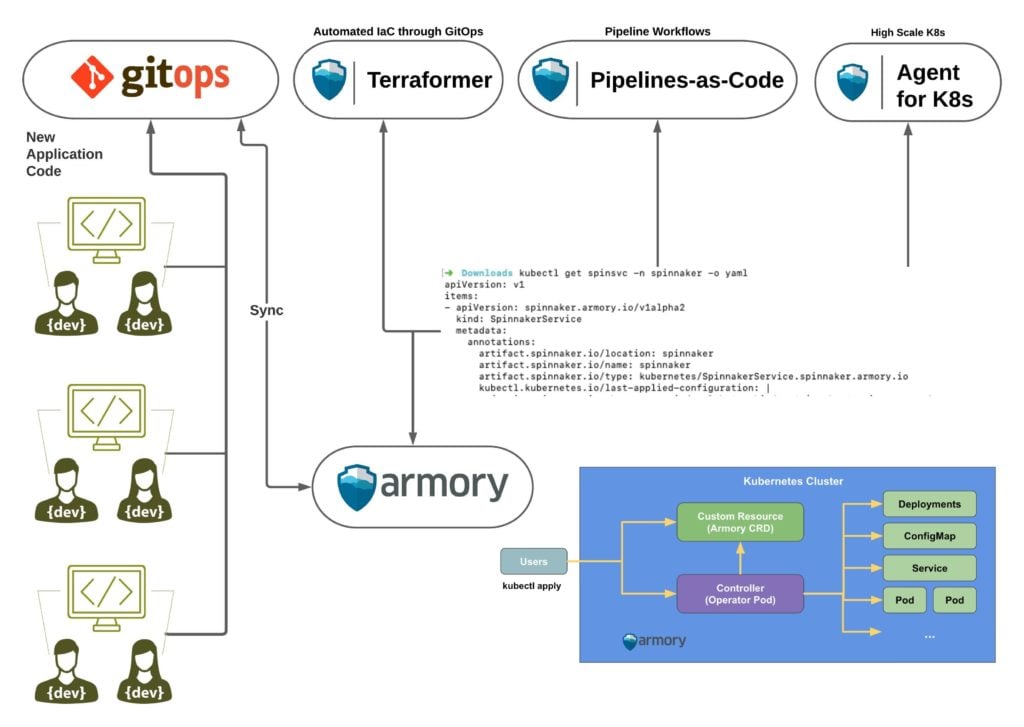Armory Employs K3s to Simplify Spinnaker CD Installs
Armory today launched an Armory Minnaker offering that makes use of a lightweight instance of Kubernetes coupled with operators software to make it simpler to deploy its distribution of the open source Spinnaker continuous delivery (CD) platform.
Chad Tripod, field CTO for data and cloud at Armory, says one of the primary challenges organizations encounter with Spinnaker is that it’s complex to configure and deploy. Operators, a means to configure Kubernetes clusters developed originally by CoreOS, are, however, extensible. By creating an Armory Operator for deploying Spinnaker on an open source K3s instance of Kubernetes, Armory reduces installation complexity to the point where the CD platform can now be in installed in less than 10 minutes, says Tripod.
K3s instances of Kubernetes provide a lighter-weight subset of the functionality of the container orchestration platform that are starting to be more widely employed since the project was donated to the Cloud Native Computing Foundation (CNCF), which oversees the development of Kubernetes, by Rancher Labs, which has since been acquired by SUSE.
Originally developed by Netflix, Spinnaker is now being advanced under the auspices of the Continuous Delivery (CD) Foundation, which, like the CNCF, is also an arm of the Linux Foundation. Armory is making a case for deploying a Spinnaker CD platform independently of a continuous integration (CI) platform that can be used to automate deployments of both emerging microservices, based on containers, as well as applications based on traditional monolithic architectures.
Providers of integrated CI/CD platforms have been making the case for tightly integrating DevOps workflows for years now. Most DevOps teams, however, have not been able to fully automate the delivery of applications, because each platform an application is deployed on tends to be unique. As a result, DevOps teams wind up writing additional custom scripts to deploy applications that then need to be maintained.
In theory, the rise of Kubernetes presents an opportunity to standardize on Kubernetes clusters that all present a common application programming interface (API). However, there are many extensions and add-on modules for Kubernetes platforms that, over time, conspire to make each environment somewhat unique.
Spinnaker was specifically created by the internal DevOps team at Netflix to address that complexity using a CD platform based on a microservices architecture. Armory was created specifically to curate a distribution of Spinnaker that would be easier for enterprise IT organizations to both consume and construct GitOps workflows. Those workflows enable a platform to automatically pull artifacts directly from Git repositories, rather than waiting for a DevOps team to use a CI/CD platform to push code out to a target platform.
It’s still early days as far as adoption of Spinnaker in the enterprise is concerned. There are now multiple platforms that, to varying degrees, enable software development teams to implement GitOps best practices. However, as Spinnaker continues to evolve, many more organizations should be able to more easily automate continuous delivery. The issue they will need to come to terms with, however, is the degree to which they may require a separate dedicated CD platform versus trying to continue to depend on an integrated CI/CD platform.





